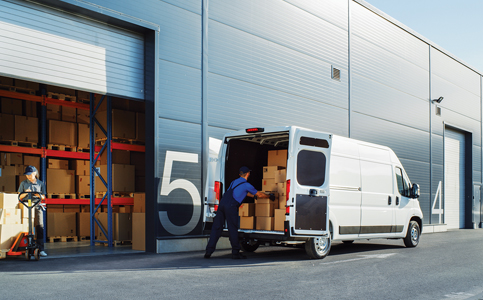E-commerce drives industrial space demand

Advertisement

The warehouse space market continues to be solid throughout Miami-Dade County, according to local industrial real estate experts.
The underlying cause of demand is still e-commerce, said Dalton Easton, an associate at The Easton Group.
“It’s certainly not historic levels that we had in the last 12 to 18 months,” he said. “It’s safe to say the majority of the folks in the industry knew that wasn’t sustainable for the long term, but the underlying cause for this demand is still e-commerce. The trend for the next couple of years is to upgrade our supply chains accordingly and adapt to that consumer who wants their package delivered same day, next day or sooner than what was the standard on the previous five to 10 years.”
South Florida is unique on how close it is to South and Central America, Mr. Easton added, “which makes us a hub for that portion of the world.”
The Miami-Dade industrial real estate market has in many ways been a safeguard for assets through a market-wide slowdown. Fundamentals and quarterly numbers remain strong, although there has been a clear decrease in sales and leasing activity through the second quarter of 2023, according to JLL’s Miami-Dade County industrial insight report.
Although leasing activity has slowed, sustained demand, limited land supply, and low vacancies have enabled landlords to hold strong on rates, the report said. Quarter-over-quarter rent growth has been 1.9%, with asking rates pushing upward of $16 per square foot. Year-over-year rent growth sits at 18.7%, a sharp increase from what asking rates were a year ago today.
Over 7.5 million square feet of Class A space is currently under construction throughout Miami Dade. The bulk of construction is highly concentrated in Northwest and Central Miami-Dade, according to the report. Demand is expected to remain steady, while last-mile logistics and distribution facilities are expected to continue to fuel the majority of leasing.
“We saw the requirement for e-commerce is a little bit different due to the fact that they need a little more parking for their trucks,” said Matt Rotolante, president of Lee & Associates South Florida. “What happens with e-commerce is they have a fleet that’s going to be running back and forth within the market, so it’s a little bit more intensive on the parking from a distribution standpoint.”
Retailers tend to expand as they lease warehouses and then put stores within that region, he said, “and that way you’re paying the trucker for one day, and then once you get to a certain number of stores, then then you’re doing more efficient trucking.”
South Florida has benefited overall from e-commerce, Mr. Rotolante said. “You need a different warehouse to do the retail distribution and another to do returns. You’re not doing both of those things out of the same warehouse in most cases.”


